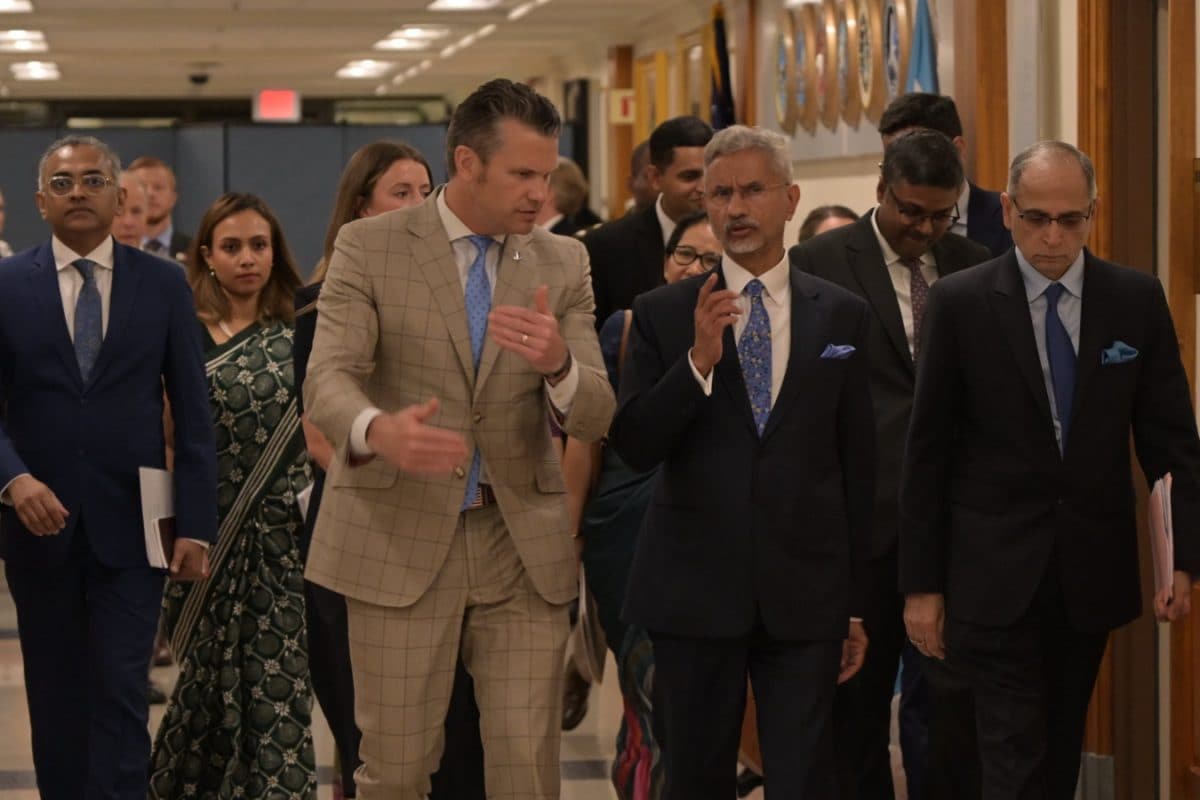

During a recent visit to the Pentagon, India's External Affairs Minister S. Jaishankar affirmed that the defense relationship between India and the United States stands as "one of the most consequential pillars" of their partnership. This statement underscores the increasing importance of defense cooperation in the broader context of Indo-US relations, particularly as both nations navigate the evolving dynamics of the Indo-Pacific region.
Jaishankar's visit, which followed the Quad Foreign Ministers' Meeting, provided an opportunity to meet with US Defense Secretary Pete Hegseth and discuss ways to deepen defense cooperation, enhance regional security, and strengthen the strategic alignment between the two countries. Hegseth welcomed the progress made in integrating US defense systems into India's armed forces and expressed his support for further expanding industrial cooperation and co-production networks. He also noted the shared commitment of both nations to a free and open Indo-Pacific, acknowledging their mutual awareness of security concerns in the region and their combined ability to address these concerns.
The growing defense partnership between India and the US extends beyond mere weapons procurement. It encompasses collaboration on technology, joint production, and initiatives aimed at bolstering regional security. Both countries are actively working to improve the interoperability of their militaries and foster long-term cooperation that goes beyond transactional agreements. This deeper engagement is viewed as potentially crucial for maintaining stability and shaping the future dynamics of the Indo-Pacific, especially amid rising tensions.
Hegseth highlighted the strong foundation laid by President Trump and Prime Minister Modi for the US-India relationship, characterizing it as "productive, pragmatic, and realistic". He also expressed the US's satisfaction with the successful integration of numerous US defense items into India's inventory. Looking ahead, the US aims to finalize several major pending defense sales to India, expand shared defense industrial cooperation and co-production efforts, and strengthen interoperability between their forces. The formal signing of a new 10-year Framework for the US-India Major Defense Partnership is also anticipated.
Specific examples of defense cooperation include plans to pursue new procurements and coproduction arrangements for Javelin antitank guided missiles and Stryker armored vehicles. Discussions have also taken place regarding the procurement of additional P-8I maritime patrol aircraft. India has already integrated various US-made military equipment into its arsenal, including C-130J Super Hercules, C-17 Globemaster III, and P-8I Poseidon aircraft, as well as CH-47F Chinook, MH-60R Sea Hawk, and AH-64E Apache helicopters, and Harpoon antiship missiles.
Both Jaishankar and Hegseth emphasized the importance of the India-U.S. Defense Acceleration Ecosystem Summit as a platform for building on defense industrial cooperation and fostering new innovations in technology and manufacturing. Jaishankar stated that the defense partnership is built not only on shared interests but also on a deepening convergence of capabilities and responsibilities. He stressed that the actions taken by India and the US in the Indo-Pacific are crucial for the region's strategic stability.
On the sidelines of the Quad Foreign Ministers' Meeting, Jaishankar also met with US Secretary Marc Rubio to discuss various aspects of the bilateral partnership, including trade, security, critical technologies, connectivity, energy, and mobility, as well as regional and global developments.